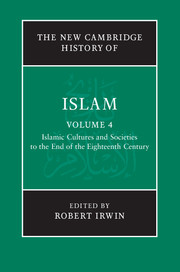Book contents
- Frontmatter
- Introduction
- PART I RELIGION AND LAW
- PART II SOCIETIES, POLITICS AND ECONOMICS
- 7 Legitimacy and political organisation: caliphs, kings and regimes
- 8 The city and the nomad
- 9 Rural life and economy until 1800
- 10 Demography and migration
- 11 The mechanisms of commerce
- 12 Women, gender and sexuality
- PART III LITERATURE
- PART IV LEARNING, ARTS AND CULTURE
- Glossary
- Bibliography
- Index
- References
12 - Women, gender and sexuality
from PART II - SOCIETIES, POLITICS AND ECONOMICS
Published online by Cambridge University Press: 28 March 2011
- Frontmatter
- Introduction
- PART I RELIGION AND LAW
- PART II SOCIETIES, POLITICS AND ECONOMICS
- 7 Legitimacy and political organisation: caliphs, kings and regimes
- 8 The city and the nomad
- 9 Rural life and economy until 1800
- 10 Demography and migration
- 11 The mechanisms of commerce
- 12 Women, gender and sexuality
- PART III LITERATURE
- PART IV LEARNING, ARTS AND CULTURE
- Glossary
- Bibliography
- Index
- References
Summary
Women and gender
The history of women in Islamic societies has made steady progress over the last few decades, following the spectacular growth of the field in other historiographical arenas. Particularly, although not exclusively, Ottomanists have contributed to the increase in publications on women’s history, thanks to the richness of Ottoman archives. For other periods of Islamic history the lack of archival evidence has not hindered the completion of some good studies based upon other sources: literary works, chronicles, biographical dictionaries or juridical writings. To some extent these different sources are complementary. While archival documents illuminate the lives of ordinary individuals making an appearance in court, other texts inform us about societal attitudes, normative rulings and transgressions. Biographical accounts, although normally restricted to specific social groups, such as urban elites or sovereign families, have the added value of charting women’s lives across a longer period of time, which is usually impossible from research into archival documents. In a challenge to the traditional view of women in classical Islam as unknown, hidden and passive members of society, research based upon all these sources increasingly demonstrates the crucial role played by gender and gendered attitudes and norms.
- Type
- Chapter
- Information
- The New Cambridge History of Islam , pp. 355 - 380Publisher: Cambridge University PressPrint publication year: 2010

